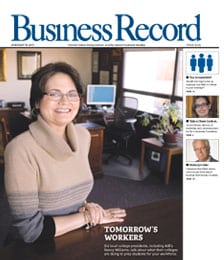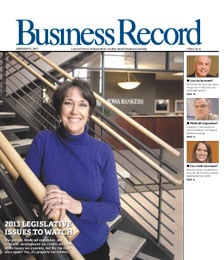Rooted in the soil
.floatimg-left-hort { float:left; } .floatimg-left-caption-hort { float:left; margin-bottom:10px; width:300px; margin-right:10px; clear:left;} .floatimg-left-vert { float:left; margin-top:10px; margin-right:15px; width:200px;} .floatimg-left-caption-vert { float:left; margin-right:10px; margin-bottom:10px; font-size: 12px; width:200px;} .floatimg-right-hort { float:right; margin-top:10px; margin-left:10px; margin-bottom:10px; width: 300px;} .floatimg-right-caption-hort { float:left; margin-right:10px; margin-bottom:10px; width: 300px; font-size: 12px; } .floatimg-right-vert { float:right; margin-top:10px; margin-left:10px; margin-bottom:10px; width: 200px;} .floatimg-right-caption-vert { float:left; margin-right:10px; margin-bottom:10px; width: 200px; font-size: 12px; } .floatimgright-sidebar { float:right; margin-top:10px; margin-left:10px; margin-bottom:10px; width: 200px; border-top-style: double; border-top-color: black; border-bottom-style: double; border-bottom-color: black;} .floatimgright-sidebar p { line-height: 115%; text-indent: 10px; } .floatimgright-sidebar h4 { font-variant:small-caps; } .pullquote { float:right; margin-top:10px; margin-left:10px; margin-bottom:10px; width: 150px; background: url(http://www.dmbusinessdaily.com/DAILY/editorial/extras/closequote.gif) no-repeat bottom right !important ; line-height: 150%; font-size: 125%; border-top: 1px solid; border-bottom: 1px solid;} .floatvidleft { float:left; margin-bottom:10px; width:325px; margin-right:10px; clear:left;} .floatvidright { float:right; margin-bottom:10px; width:325px; margin-right:10px; clear:left;}
Down there where things green and glorious take a stand grows a trading market that can be as mercurial as Wall Street. One day, it could be as influential.
And it all has to do with controlling greenhouse gases by using large doses of ingenuity and entrepreneurial spirit. In other words, if we’re going to do our bit to cool down the atmosphere, why not turn a buck in the process.
In farm country, that means keeping carbon in the ground by growing crops and grasses through no-till methods in which seeds are drilled directly into the ground. It skips the conventional step of plowing or otherwise opening up the soil before planting row crops.
No-till farming achieves something called carbon sequestration: Trap the stuff in the ground – or the limbs and roots of a tree – and prevent it from oxidizing and forming carbon dioxide, the dark component of a warming planet.
Little wonder that the Iowa Farm Bureau Federation broke new ground when it launched a spinoff company called AgraGate Climate Credit Corp. to sell something called carbon credits on an experimental board of trade in which polluters, or emitters, buy those credits and, in theory, keep on polluting.
“It is the most cost-efficient way to take greenhouse gases out of the atmosphere,” said AgraGate CEO David Krog. “For emitters, it would be extremely expensive to reduce greenhouse gases to target levels, so they pay others who can reduce them more efficiently.”
Krog is an agronomist and economist by education. He confesses that he might not understand all the whys-and-wherefores of carbon sequestration. However, he does see the economic and environmental benefit of a carbon exchange.
“It could have a real positive impact not only on the environment but in farmers’ pockets,” Krog said.
The Farm Bureau broke new ground by being the first organization in the country to pool, or aggregate, farm producers who could sell their carbon credits on an experimental board of trade, the Chicago Climate Exchange, which opened in 2003.
The exchange focuses on carbon dioxide and other components of greenhouse gases, including methane and fluorocarbons.
The effort went national with the formation last year of AgraGate, which also sells credits for reforestation, improvement of rangelands and on-farm methane digesters.
Dave Miller is the chief science officer for AgraGate and the director of research and commodity services for the Farm Bureau. It was his research into various forms of carbon credit trading and greenhouse gas issues that prompted the organization to join the Chicago Climate Exchange.
The concept of trading in environmental commodities is not new, having originated nearly 20 years ago with efforts to reduce acid rain through a sulfur dioxide exchange.
“It showed that a market approach can make a difference,” Krog said.
The same people involved in that program were involved in establishing the Chicago Climate Exchange.
Miller has placed about 165 acres of his 330-acre Lucas County farm into the program. He receives what amounts to a dividend check twice a year.
About 400,000 acres of Iowa farmland are enrolled with AgraGate. Those acres must remain in what is called continuous no-till for five years to qualify for a carbon credit.
At present, farmers won’t get rich in the program. On June 11, a carbon credit on the Chicago Climate exchange was trading for about $5.50 a metric ton. The no-till land receives 0.6 of a credit, or what would have been $3.80 per acre on that day.
All of the farmers who enroll land in the AgraGate program share in the proceeds from selling credits.
“I tell people to think of it like a grain bin where a lot of people put their grain in the same bin, it is stored and then we sell out of the bin and twice a year we split that up based on everybody’s prorated share,” Miller said.
To qualify for any of the AgraGate carbon credit programs, participants must demonstrate that they are making a change in production methods that achieves a quantifiable improvement in the environment.
For example, not just any grassland, such as old brome grass pasture, can qualify for a carbon credit. Instead, a field must have been converted to grasses after January 1, 1999 to qualify. Also, the grassland’s ability to sequester more carbon must have been enhanced.
Carbon market faces regulation
At present, participation in the Chicago Climate Exchange is voluntary, giving it a free-market appeal that has attracted large corporations.
That appeal could fade a little after the presidential election. Both major party candidates, John McCain and Barack Obama, favor government-mandated caps on greenhouse gas emissions, both to show that the United States is a good global-village neighbor and to demonstrate that the country recognizes the threat of global warming and is ready to do something about it.
As a possible indication that the Chicago Climate Exchange could someday compete with Wall Street susceptibility to market jitters, prices dropped more than $1 per credit when the U.S. Congress debated, then killed legislation that would have mandated caps on pollution.
Although the debate was viewed as a trial run for such legislation – President George Bush said he would veto the bill – it sparked volatility in the carbon trade market.
“I didn’t think it was going to have that much of a negative impact on the market,” Krog said. “That’s the nature of markets.”
Though prices dropped during the debate, Krog and others anticipate that they will rise when Congress regulates carbon emissions.
In fact, he considers it something of a foregone conclusion that cap-and-trade legislation will become law after the presidential election.
Krog and Miller are convinced that a voluntary approach to controlling greenhouse gases is effective. Yet, they say, it might not be the best way to produce dramatic decreases in pollution. As was indicated in the recent congressional debate, caps on greenhouse gases probably will be somewhat generous at the onset and become more restrictive over time.
With greater regulation will come increases in the value of a carbon credit. In Europe, where the emission of greenhouse gases are regulated, carbon credits trade for about $25 or more per metric ton.
“If you want to see what the future holds, look at Europe and its cap-and-trade program,” said Tracy Lemar, vice president of Barker Lemar Engineering Consultants in West Des Moines.
Barker Lemar specializes in helping businesses, communities or any entity that emits greenhouses gases prepare for the future.
By changing their practices, those organizations also could qualify for a carbon credit.
It’s all part of companies “greening their product,” Lemar said.
The carbon credit market encourages companies to reduce the amount of greenhouse gases – their carbon footprint – that they are emitting.
“If companies are reducing their carbon footprint, they will see an economic benefit,” Lemar said.
Lemar said businesses can take steps to reduce emissions, amortize the costs of that process over 20 years and then take the additional financial advantage of claiming a carbon credit after that time.









